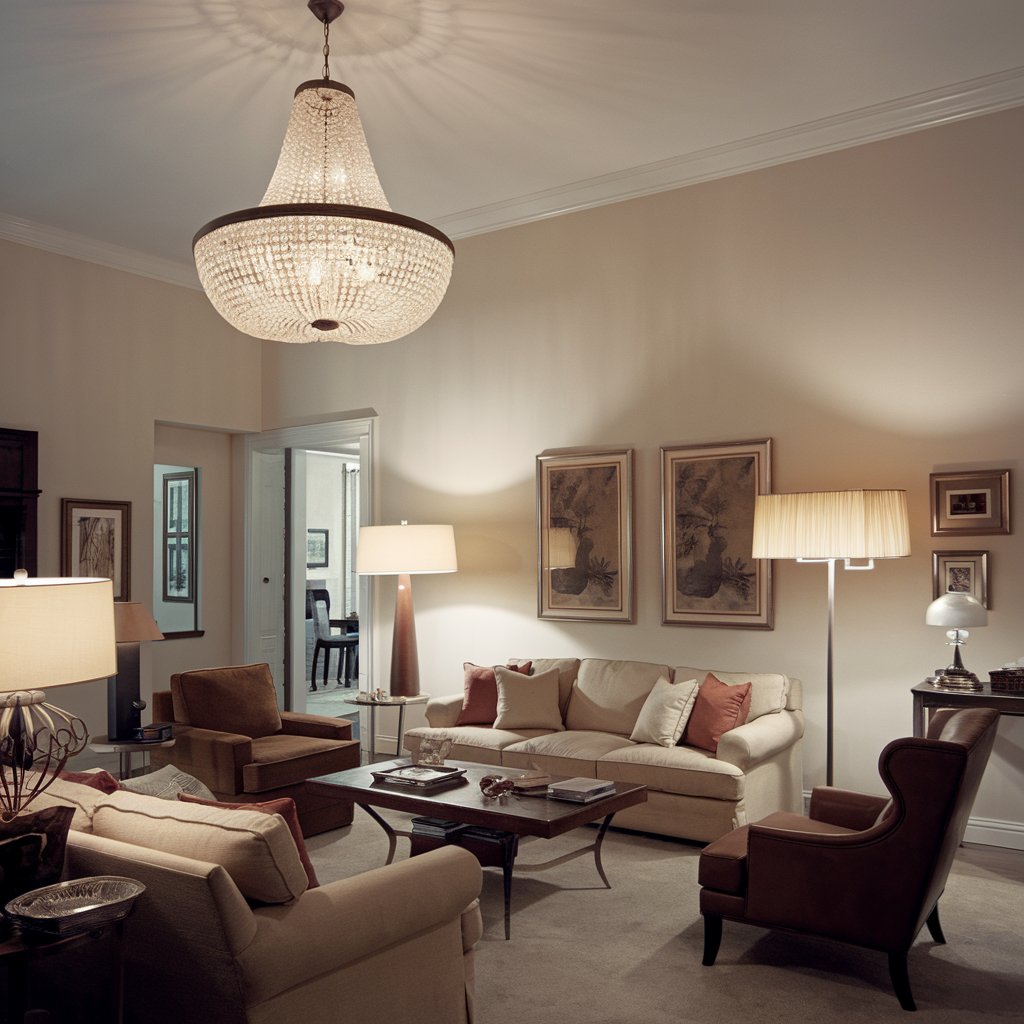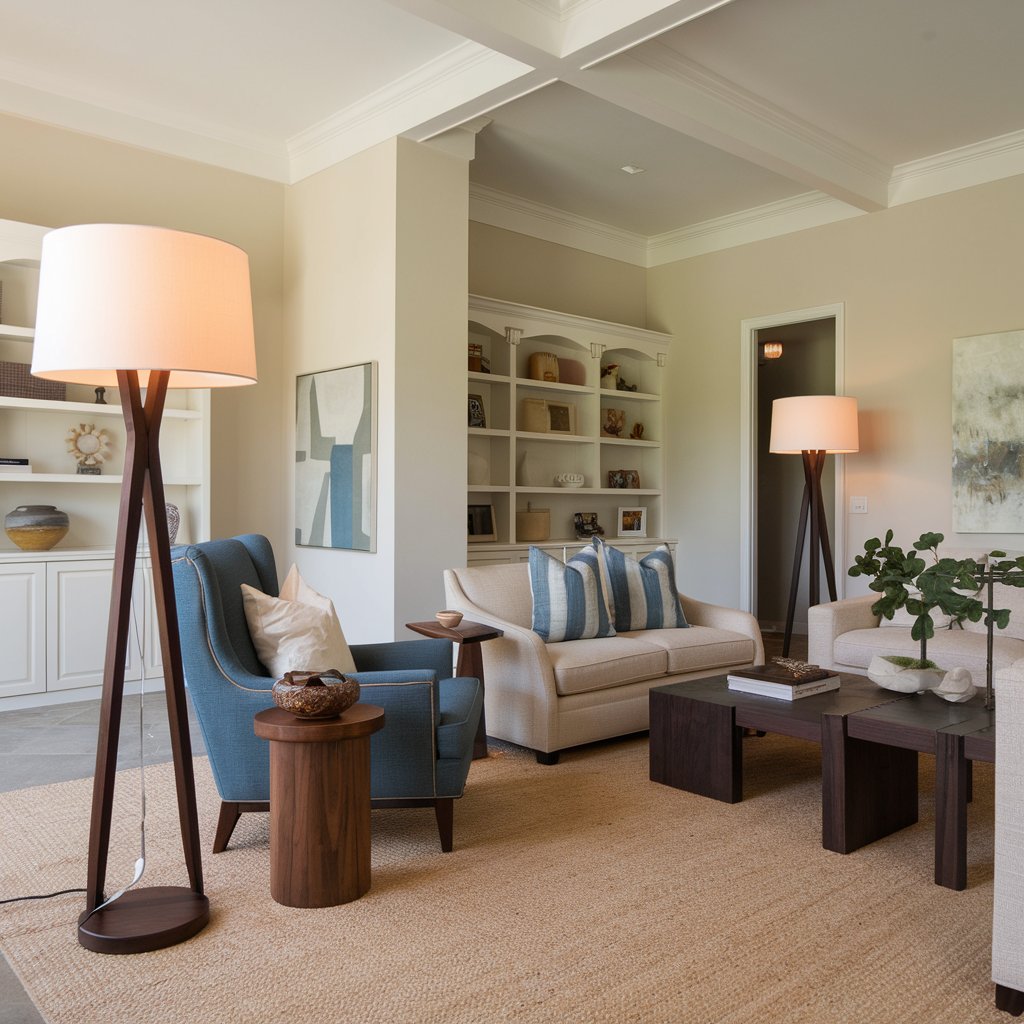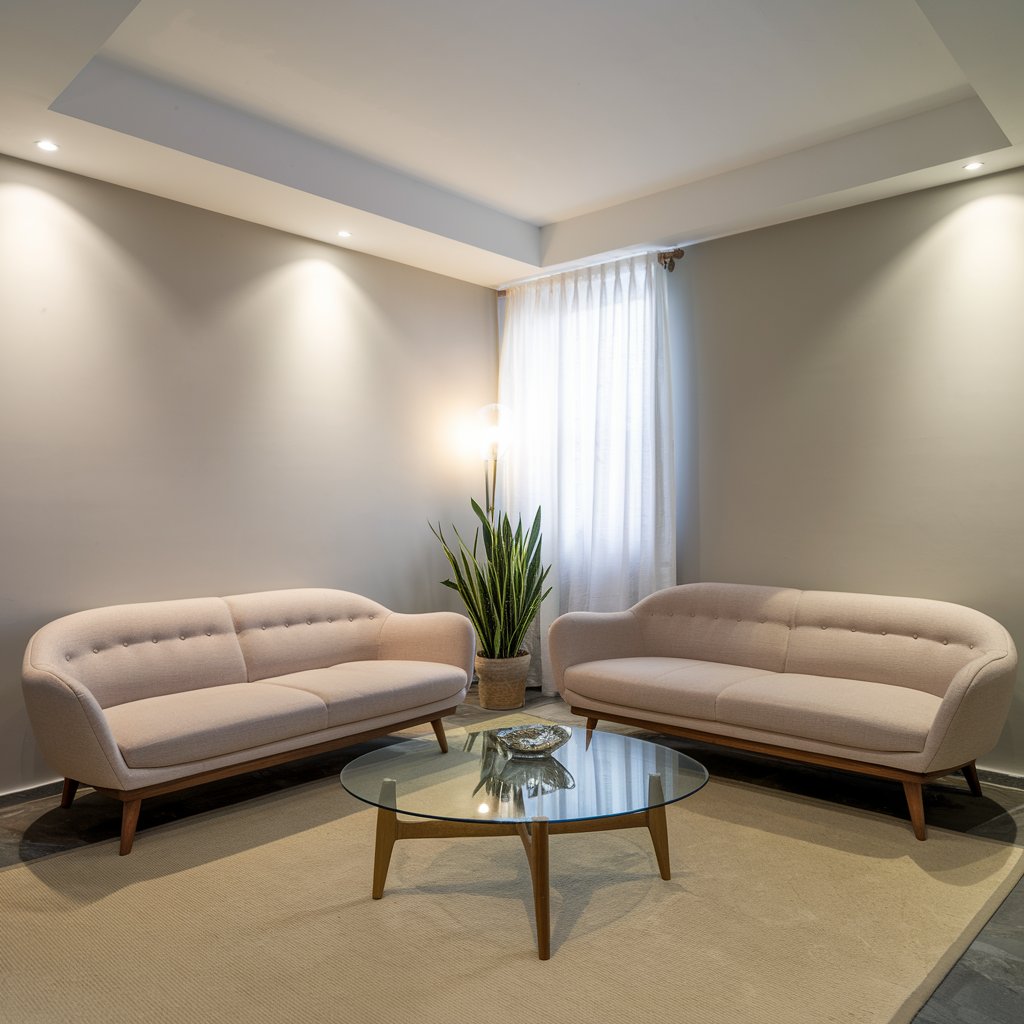Transform Your Space: How to Improve Lighting in a Room?
Want a room that feels cozy, inviting, and functional? It all starts with the lighting. How to improve lighting in a room? This comprehensive guide will equip you with the knowledge and techniques to transform your space, from understanding the basics of illumination to mastering advanced lighting design principles. We’ll explore different lighting types, placement…
Want a room that feels cozy, inviting, and functional? It all starts with the lighting. How to improve lighting in a room? This comprehensive guide will equip you with the knowledge and techniques to transform your space, from understanding the basics of illumination to mastering advanced lighting design principles. We’ll explore different lighting types, placement strategies, and cost-effective solutions, leaving you with a brighter, more beautiful, and more comfortable home. Get ready to illuminate your world!
Good lighting isn’t just about brightness; it’s about creating the right ambiance and functionality for your space. It involves a balanced blend of ambient, task, and accent lighting to cater to various needs and moods. Ambient lighting provides overall illumination, task lighting focuses light on specific work areas, and accent lighting highlights architectural features or artwork.
How To Improve Lighting in a Room?
Use layered lighting by combining ambient, task, and accent lights. Add brighter LED bulbs, use mirrors to reflect light, choose lighter wall colors, and keep windows unobstructed. Install dimmers for control and place floor or table lamps in dark corners to eliminate shadows and create a balanced, well-lit space.
Why is good lighting important?

Proper lighting dramatically impacts mood, productivity, and even health. Poor lighting can lead to eye strain, headaches, and fatigue. Conversely, well-designed lighting enhances comfort, improves focus, and can even boost your mood. A well-lit room feels more spacious and inviting, increasing its perceived value.
Read More: Lighting A 15’x15′ Room: How Many Can Lights for 15’x15 Room?
Types of Lighting
Ambient Lighting
This provides general illumination, setting the overall tone of the room. Examples include ceiling fixtures (chandeliers, recessed lights), floor lamps, and wall sconces. Consider the size of the room when choosing ambient lighting; a large room requires more powerful fixtures than a small one.
Task Lighting
This focuses light on specific areas where you need it most, such as a desk, kitchen counter, or reading nook. Desk lamps, under-cabinet lighting, and pendants above kitchen islands are all examples of task lighting. Look for adjustable lamps to customize the light direction and intensity.
Accent Lighting
Accent lighting highlights specific features or artwork, adding visual interest and depth. Track lighting, picture lights, and strategically placed spotlights are effective accent lighting options. This type of lighting often uses warmer-toned bulbs to enhance the aesthetic appeal.
Read More: How Many Can Lights in a 20×20 Room Without: Determining The Right Number
Choosing the Right Light Bulbs

Understanding Kelvin (K)
The Kelvin (K) scale measures color temperature. Lower Kelvin values (2700K-3000K) produce warm, yellowish light, ideal for creating a cozy atmosphere in living rooms and bedrooms. Higher Kelvin values (5000K-6500K) produce cooler, bluish light, suitable for kitchens, bathrooms, and workspaces where bright light is needed for tasks.
Lumens and Brightness
Lumens (lm) measure the total amount of light emitted by a bulb. Higher lumens mean brighter light. When choosing bulbs, consider the size of the room and the desired brightness level. A larger room generally needs higher-lumen bulbs.
Types of Bulbs
Incandescent bulbs are inefficient but offer warm light. Fluorescent bulbs are energy-efficient but can produce a cooler light. LED bulbs are the most energy-efficient and long-lasting option, available in a wide range of color temperatures and brightness levels.
Read More: How Bright Should Living Room Lighting Be? Achieving The Right Brightness
Optimizing Light Placement

Layering Light Sources
Combining different lighting types (ambient, task, and accent) creates a well-balanced and versatile lighting scheme. This allows you to adjust the lighting to suit different activities and moods.
Strategic Placement
Consider the function of each area. Place task lighting directly where you need it, avoiding shadows and glare. Position ambient lighting to illuminate the entire room evenly. Use accent lighting to draw attention to focal points.
Avoiding Glare and Shadows
Proper light placement minimizes glare and shadows. Use diffused lighting sources, such as shades or diffusers, to soften the light. Avoid placing light sources directly in your line of sight.
Natural Light Maximization
Window Treatments
Choose sheer curtains or blinds that allow natural light to filter through while maintaining privacy. Avoid heavy drapes that block out sunlight. Consider using light-colored window treatments to reflect light into the room.
Mirror Placement
Strategically placed mirrors can reflect natural light, making a room appear brighter and more spacious. Place mirrors opposite windows to maximize this effect.
Decluttering
Clutter can block natural light. Keep windows and surrounding areas clear to allow maximum sunlight penetration.
Working with Different Room Types
Living Room Lighting
Combine ambient lighting (ceiling fixture or floor lamp) with task lighting (reading lamp) and accent lighting (table lamps or spotlights). Choose warm-toned bulbs for a cozy atmosphere.
Bedroom Lighting
Prioritize a calming ambiance. Use dimmable ambient lighting (ceiling fixture or bedside lamps) and consider a reading lamp with a flexible arm for task lighting. Avoid harsh, bright light.
Kitchen Lighting
Utilize a combination of ambient (recessed lighting), task (under-cabinet lighting and pendant lights over islands), and accent (track lighting). Opt for bright, cool-toned bulbs for clear visibility.
Budget-Friendly Lighting Solutions
Affordable Lighting Fixtures
Many retailers offer stylish and affordable lighting fixtures. Compare prices and read reviews before purchasing. Consider purchasing energy-efficient bulbs to save on electricity costs in the long run.
DIY Lighting Projects
Simple DIY projects can significantly enhance your room’s lighting. Repurpose old jars as pendant lights or create a unique lampshade from recycled materials. This adds personality and saves money.
Energy-Efficient Bulbs
Switching to LED bulbs is a cost-effective way to improve lighting quality and reduce energy consumption. LED bulbs last longer than traditional incandescent bulbs, further reducing replacement costs.
Advanced Lighting Techniques
Smart Lighting Systems
Smart lighting systems offer convenient control over your room’s lighting, allowing you to adjust brightness and color temperature remotely using a smartphone or voice assistant. Examples include Philips Hue and LIFX.
Color Temperature Tuning
Adjusting the color temperature of your lighting can impact mood and productivity. Warmer tones are relaxing, while cooler tones are more energizing.
Dimmers and Switches
Dimmers allow for fine-grained control over light intensity, creating different moods and atmospheres. Consider installing dimmers on key lighting fixtures for greater flexibility.
Troubleshooting Lighting Problems
Identifying Lighting Issues
Analyze the current lighting in your room. Are there areas with insufficient light? Is there excessive glare or shadowing? Pinpointing specific problems helps determine the most effective solutions.
Common Lighting Mistakes
Over-reliance on a single light source, neglecting task lighting, using bulbs with incorrect color temperature, and improper fixture placement are all common lighting mistakes that can be easily avoided.
Solutions to Common Issues
Addressing lighting problems might involve adding more light sources, adjusting bulb wattage or color temperature, repositioning existing fixtures, or upgrading to more efficient bulbs.
Frequently Asked Questions
What are the different types of light fixtures?
There are many, including chandeliers, pendant lights, recessed lights, track lighting, sconces, floor lamps, table lamps, and more. The best choice depends on your room’s style, size, and functionality.
How do I choose the right wattage for my light bulbs?
Wattage is less important now with LEDs. Focus on lumens (brightness) instead. A higher lumen value indicates brighter light. Consider the size of your room and the desired brightness level.
How can I improve the lighting in a dark room?
Maximize natural light with reflective surfaces (mirrors), use brighter bulbs (higher lumens), add more light sources (lamps, sconces), and choose lighter-colored wall paints to reflect more light.
What is the difference between warm and cool white light?
Warm white (2700K-3000K) is yellowish and creates a cozy ambiance, suitable for living rooms and bedrooms. Cool white (5000K-6500K) is bluish and is more energizing, ideal for kitchens and bathrooms.
Can I use smart bulbs in any fixture?
Most smart bulbs are compatible with standard light sockets, but always check the bulb’s specifications and your fixture’s compatibility before purchasing. Some fixtures may require specific bulb types.
Final Thoughts
Improving your room’s lighting is a transformative process. By understanding the basics of lighting design, choosing appropriate bulbs, and strategically placing fixtures, you can create a space that is functional, inviting, and aesthetically pleasing. Remember, layering light sources, maximizing natural light, and addressing any glare or shadowing issues are key to achieving optimal results. Whether you’re tackling a simple DIY project or installing a sophisticated smart lighting system, the rewards are well worth the effort. Don’t be afraid to experiment and find what works best for your space and personal style. Now go forth and illuminate your home!

